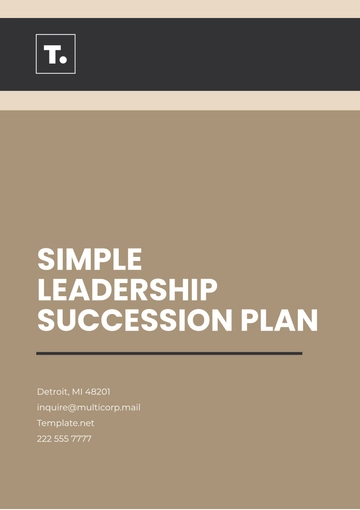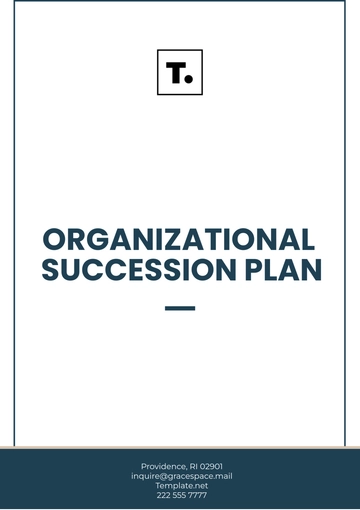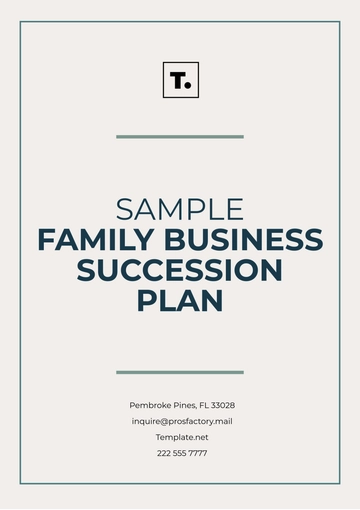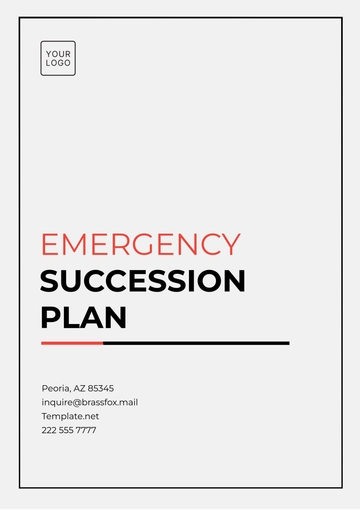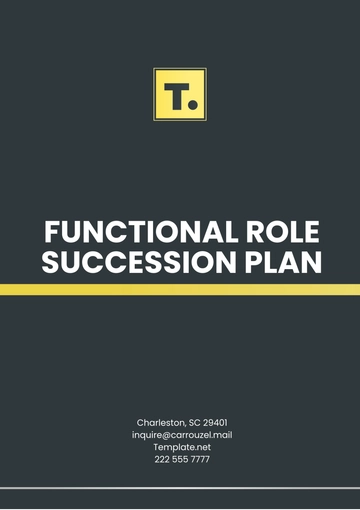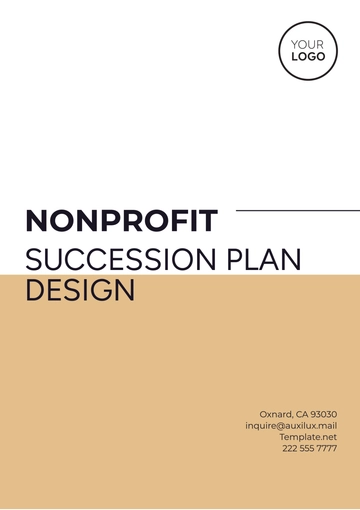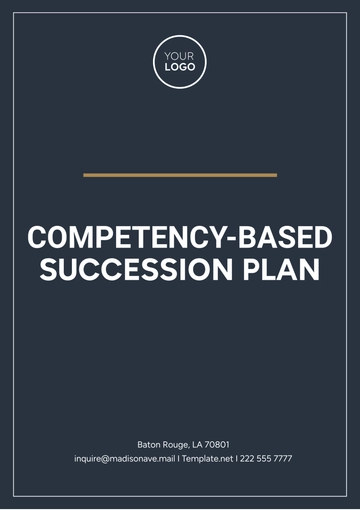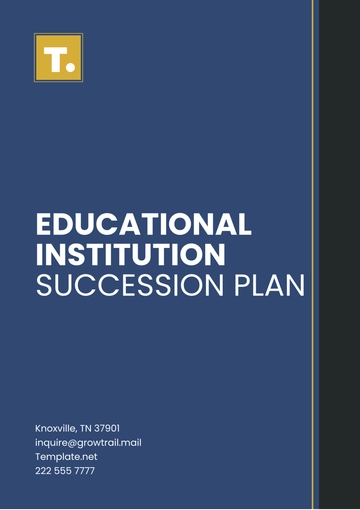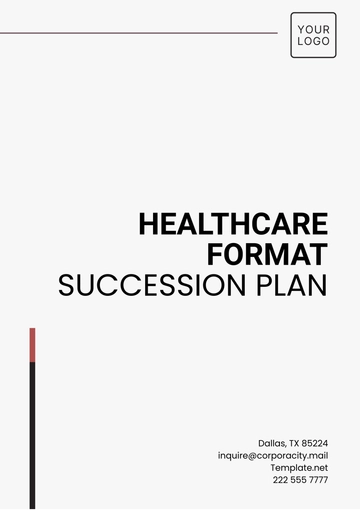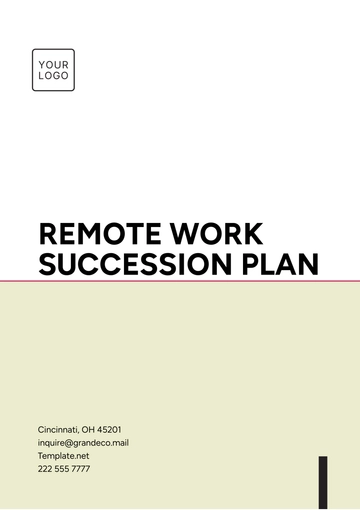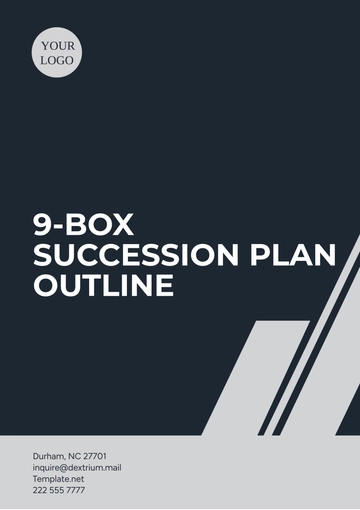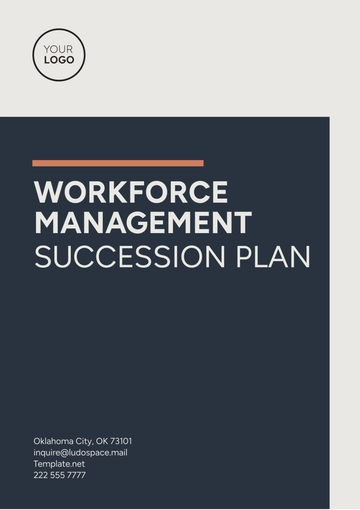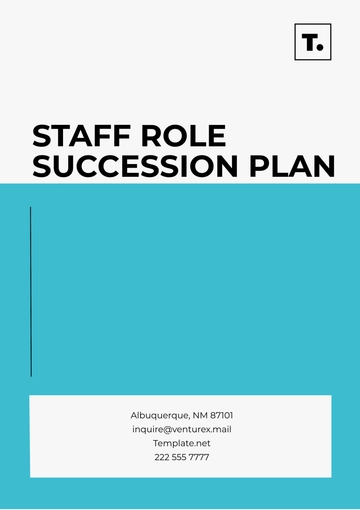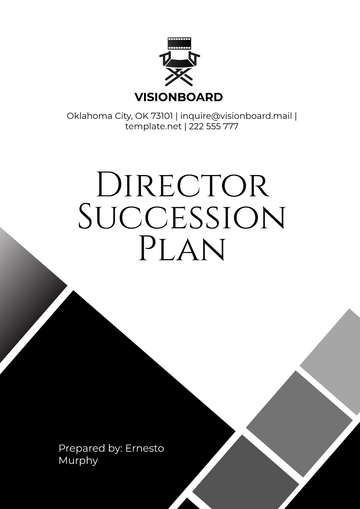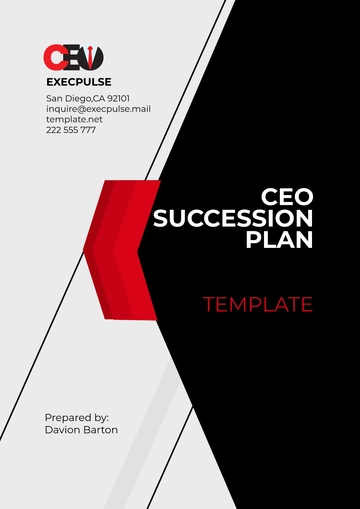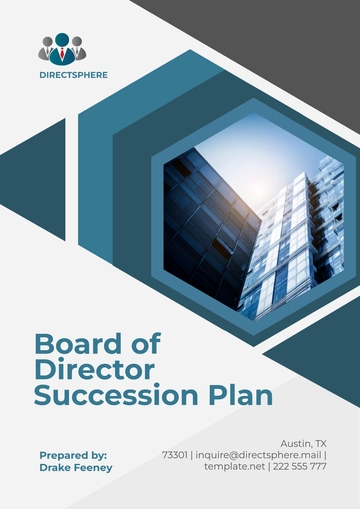Free 9-Box Succession Plan Outline
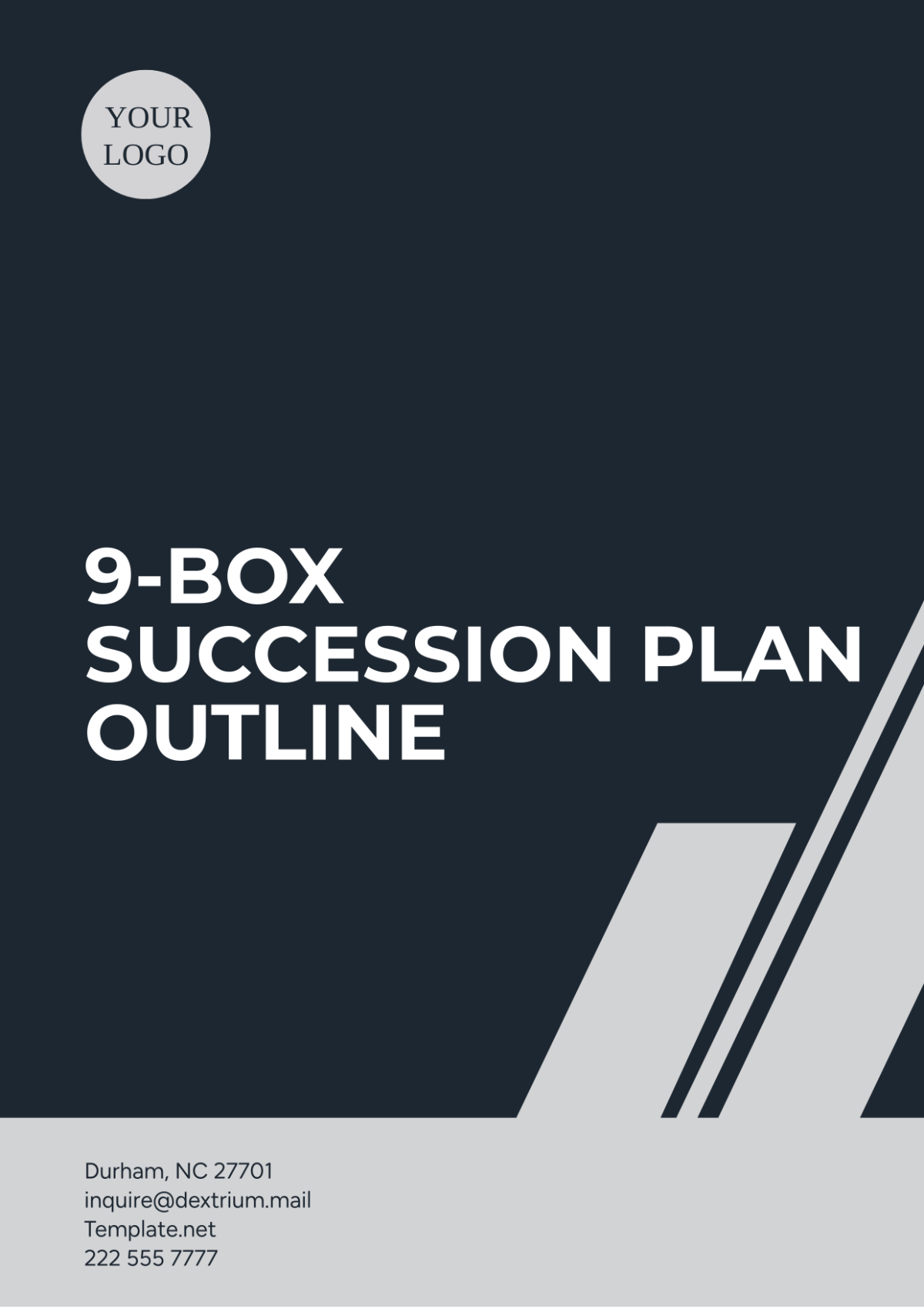
Matrix Overview
The 9-Box Matrix consists of nine boxes created by intersecting two axes:
Vertical Axis (Performance): Ranges from low to high performance.
Horizontal Axis (Potential): Ranges from low to high potential for growth.
9-Box Succession Plan Matrix
Low Potential | Moderate Potential | High Potential | |
|---|---|---|---|
High Performance | Box 1: Acknowledge contributions; consider lateral moves. | Box 2: Identify development opportunities. | Box 3: Fast-track for leadership; create development plans. |
Moderate Performance | Box 4: Provide support; assess fit. | Box 5: Create a performance improvement plan. | Box 6: Invest in development; consider mentorship. |
Low Performance | Box 7: Assess fit; consider exits. | Box 8: Implement improvement strategies. | Box 9: Enhance performance; develop improvement plans. |
Detailed Box Descriptions
Box 1: High Performer, Low Potential
Description: Employees who consistently perform well in their current roles but may lack the skills or ambition to grow further.
Actions: Acknowledge their contributions and consider lateral moves to leverage their expertise in other areas.
Box 2: High Performer, Moderate Potential
Description: Employees who excel in their current roles and can take on more responsibility, though not necessarily at the leadership level.
Actions:
Identify specific development opportunities to enhance their skills for future roles.
Provide training or mentoring to prepare them for potential advancement.
Box 3: High Performer, High Potential
Description: Top talent who not only perform well but also show significant potential for leadership roles.
Actions:
Fast-track these individuals for leadership positions.
Create individualized development plans that may include stretch assignments, leadership training, and exposure to executive leadership.
Box 4: Moderate Performer, Low Potential
Description: Employees who meet basic performance standards but are unlikely to grow significantly in their careers.
Actions:
Provide support and coaching to improve performance.
Assess their fit for the current role and consider opportunities for different positions within the organization.
Box 5: Moderate Performer, Moderate Potential
Description: Employees who have room for improvement in performance and some growth potential.
Actions:
Develop a performance improvement plan that includes clear goals and timelines.
Explore growth opportunities within the organization that align with their skills and interests.
Box 6: Moderate Performer, High Potential
Description: Employees who are not performing at their best but possess the capabilities and desire to grow into more significant roles.
Actions:
Invest in targeted development, such as coaching and mentorship programs, to unlock their potential.
Assign them challenging projects to help improve their performance while preparing them for advancement.
Box 7: Low Performer, Low Potential
Description: Employees who consistently underperform and lack the potential for future roles.
Actions:
Assess role fit and consider possible exits from the organization or changes to their current roles.
If retention is possible, provide performance improvement plans to help them address deficiencies.
Box 8: Low Performer, Moderate Potential
Description: Employees who show some growth potential but are currently underperforming.
Actions:
Implement performance improvement strategies, including regular feedback and coaching.
Monitor progress closely and reassess their potential for growth based on improvement.
Box 9: Low Performer, High Potential
Description: Employees who are currently underperforming but have the capability and potential to excel in the right circumstances.
Actions:
Focus on performance enhancement through targeted development programs.
Develop a structured improvement plan that sets clear expectations and supports their growth.
Conclusion
The 9-Box Succession Plan Outline serves as a powerful tool for organizations to strategically manage talent and prepare for future leadership needs. By systematically evaluating employees based on their performance and potential, organizations can create targeted development plans that ensure a strong pipeline of talent ready to step into critical roles as they arise. This proactive approach not only fosters employee engagement but also strengthens the overall health of the organization.
- 100% Customizable, free editor
- Access 1 Million+ Templates, photo’s & graphics
- Download or share as a template
- Click and replace photos, graphics, text, backgrounds
- Resize, crop, AI write & more
- Access advanced editor
Optimize your succession planning with the 9-Box Succession Plan Outline Template from Template.net. This editable and customizable template provides a strategic framework for assessing and developing talent within your organization. Effortlessly modify the outline using our AI Editor Tool, ensuring that your succession strategy aligns with your specific goals and drives future leadership success.
You may also like
- Finance Plan
- Construction Plan
- Sales Plan
- Development Plan
- Career Plan
- Budget Plan
- HR Plan
- Education Plan
- Transition Plan
- Work Plan
- Training Plan
- Communication Plan
- Operation Plan
- Health And Safety Plan
- Strategy Plan
- Professional Development Plan
- Advertising Plan
- Risk Management Plan
- Restaurant Plan
- School Plan
- Nursing Home Patient Care Plan
- Nursing Care Plan
- Plan Event
- Startup Plan
- Social Media Plan
- Staffing Plan
- Annual Plan
- Content Plan
- Payment Plan
- Implementation Plan
- Hotel Plan
- Workout Plan
- Accounting Plan
- Campaign Plan
- Essay Plan
- 30 60 90 Day Plan
- Research Plan
- Recruitment Plan
- 90 Day Plan
- Quarterly Plan
- Emergency Plan
- 5 Year Plan
- Gym Plan
- Personal Plan
- IT and Software Plan
- Treatment Plan
- Real Estate Plan
- Law Firm Plan
- Healthcare Plan
- Improvement Plan
- Media Plan
- 5 Year Business Plan
- Learning Plan
- Marketing Campaign Plan
- Travel Agency Plan
- Cleaning Services Plan
- Interior Design Plan
- Performance Plan
- PR Plan
- Birth Plan
- Life Plan
- SEO Plan
- Disaster Recovery Plan
- Continuity Plan
- Launch Plan
- Legal Plan
- Behavior Plan
- Performance Improvement Plan
- Salon Plan
- Security Plan
- Security Management Plan
- Employee Development Plan
- Quality Plan
- Service Improvement Plan
- Growth Plan
- Incident Response Plan
- Basketball Plan
- Emergency Action Plan
- Product Launch Plan
- Spa Plan
- Employee Training Plan
- Data Analysis Plan
- Employee Action Plan
- Territory Plan
- Audit Plan
- Classroom Plan
- Activity Plan
- Parenting Plan
- Care Plan
- Project Execution Plan
- Exercise Plan
- Internship Plan
- Software Development Plan
- Continuous Improvement Plan
- Leave Plan
- 90 Day Sales Plan
- Advertising Agency Plan
- Employee Transition Plan
- Smart Action Plan
- Workplace Safety Plan
- Behavior Change Plan
- Contingency Plan
- Continuity of Operations Plan
- Health Plan
- Quality Control Plan
- Self Plan
- Sports Development Plan
- Change Management Plan
- Ecommerce Plan
- Personal Financial Plan
- Process Improvement Plan
- 30-60-90 Day Sales Plan
- Crisis Management Plan
- Engagement Plan
- Execution Plan
- Pandemic Plan
- Quality Assurance Plan
- Service Continuity Plan
- Agile Project Plan
- Fundraising Plan
- Job Transition Plan
- Asset Maintenance Plan
- Maintenance Plan
- Software Test Plan
- Staff Training and Development Plan
- 3 Year Plan
- Brand Activation Plan
- Release Plan
- Resource Plan
- Risk Mitigation Plan
- Teacher Plan
- 30 60 90 Day Plan for New Manager
- Food Safety Plan
- Food Truck Plan
- Hiring Plan
- Quality Management Plan
- Wellness Plan
- Behavior Intervention Plan
- Bonus Plan
- Investment Plan
- Maternity Leave Plan
- Pandemic Response Plan
- Succession Planning
- Coaching Plan
- Configuration Management Plan
- Remote Work Plan
- Self Care Plan
- Teaching Plan
- 100-Day Plan
- HACCP Plan
- Student Plan
- Sustainability Plan
- 30 60 90 Day Plan for Interview
- Access Plan
- Site Specific Safety Plan

